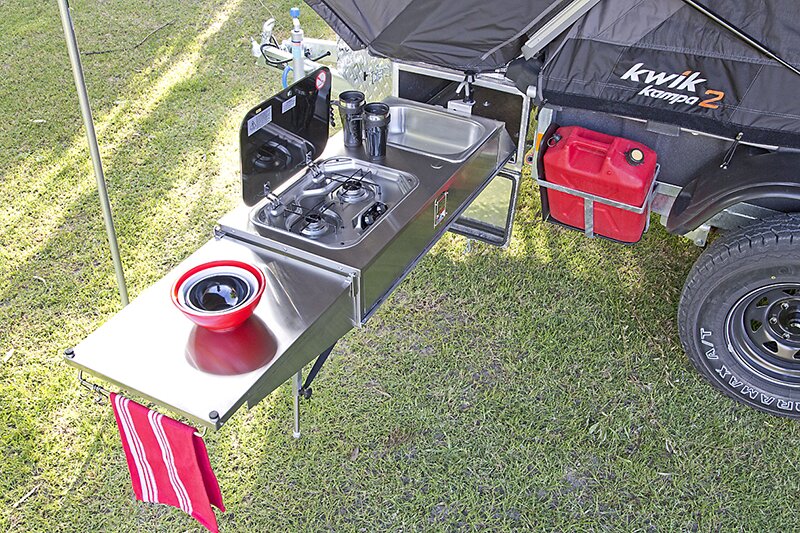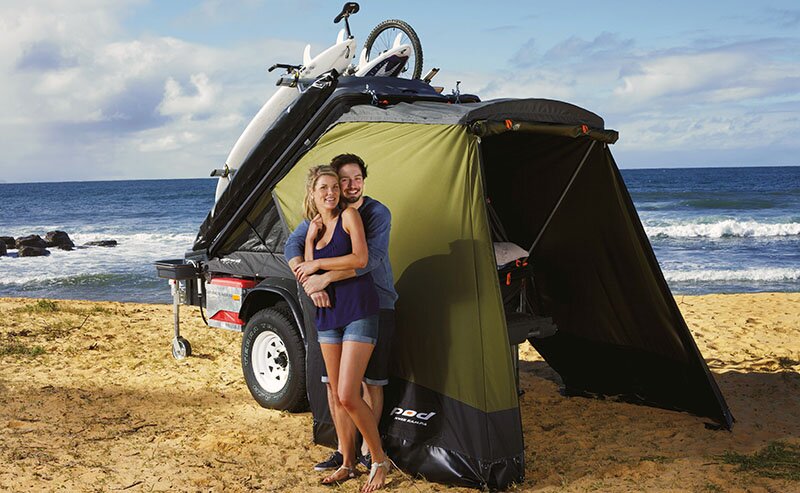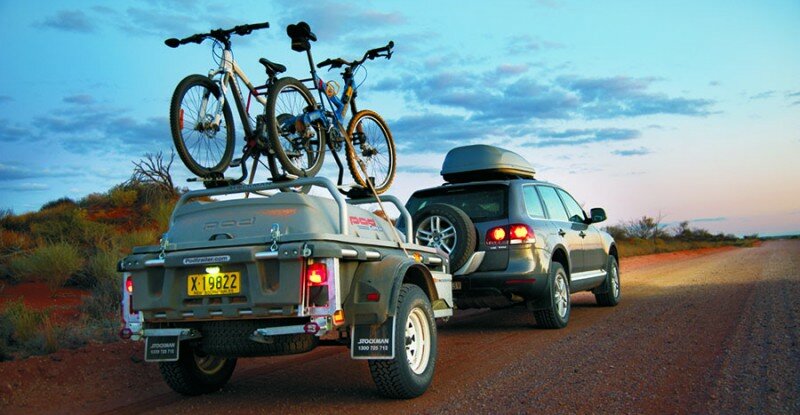They might be made of recycled plastic, but durable Pod Trailers are anything but toys and can go places others can’t.
By David Cook
The idea for the Pod Trailer came to its inventor Phil Savory one day as he was watching rain come down in his backyard.
As he lamented the fact his trusty box trailer was slowly being eaten by rust, the noticed the nearby wheelbarrow with a plastic tub sat out in the weather, copped all manner of rough treatment and endured life with ease. It was a light bulb moment. With a background of over 20 years in plastics, the Kiwi expat began to wonder why nobody had adapted plastics to the trailer industry. He resolved to be the first.
The initial plan was to produce a basic box trailer with a removable flip-up lid. The Pod Trailer was born and took out a design award in its first year. It proved durable and tough, with a 6-8mm thick UV stabilised) polyethylene tub – it’s the same sort of material used to make ute liners, wheelbarrow tubs and water tanks.
The first basic tub had a tare weight of just 180kg and the pod version of just 200kg – so was easily towed by just about any vehicle.
It soon became apparent that the whole concept had more to it than was first envisaged. The trailer began to evolve to recreational uses, including as a camper trailer.
At first this involved producing a side-fold softfloor tent in canvas, which pulled out under a sold folding lid. It extended a 2.3 x 1.8m tent off to the side (also available in a 3 x 1.8m family size), with a double bed. This became the Compact Camper. It came with an optional 450 x 1660mm laminated worktop kitchen that slid out of the back of the trailer tub, with a two-burner Smev cooktop, four large storage drawers, plastic wash tub and, if you had the optional 65lt water tank, a tap to deliver the water.

The whole kitchen area was sheltered by a 4 x 2m awning with a side wall. The suspension was upgraded from slipper springs and 14in rims to 15in Sunraysia rims on LandCruiser six-stud hubs and six-leaf eye-to-eye springs on a 40mm beam axle.
There was a range of tent options, including walls with flyscreen windows and door, annex room and tropical roof.
What had started out to be a simple adaptation of a wheelbarrow’s durability to the needs of a box trailer had evolved rapidly into a quite complex and well-equipped camper trailer. But it didn’t stop there.
Savory wasn’t completely happy with the canvas tent idea. He found that even though his tent was only 8oz weight material it was still bulky – something that was very noticeable in the very lightweight Pod Trailers and it had the old canvas management problems if packed up wet. Thinking outside the box yet again he went looking for an alternative and found a material made in the USA, called WeatherMax. It’s used for a wide variety of outdoor purposes, from boat covers to commercial awnings. Savory found it more water resistant, lighter than even his lightweight canvas option and without the mould problems of canvas.
The WeatherMax was adapted to a new model, tagged the Kwik Kampa. This had a gas strut assisted front tilting lid and a rear folding 2 x 2m vinyl tub floor softfloor tent. As an option, since many prefer the much-trusted traditional canvas, the Kwik Kama tent is also available in 9.4oz Aussie canvas.
The Kwik Kampa comes with a 2m x 1.25m 100mm thick supa-foam or inner spring mattress and options on the kitchen. There is the rear sliding laminated top kitchen as available in the Compact Camper, there is a Drifta ply kitchen with Coleman two-burner cooker and a clip-on sink tub stored in the toolbox, or a complete stainless steel kitchen, with two-burner Smev cooktop and stainless sink, with flip-over extension, all of which travels in a special box on the extended front drawbar.
The optional power pack includes a 96Ah slimline gel battery with 25 amp Projecta mains charger, volt meter, hard wired LED internal light, two 12V cigarette plugs and an Anderson plug at the hitch.

While there is a bewildering array of options presented by the Pod line-up, some things remain common throughout. They are all made here in Australia, using recycled plastics material, and at a huge weight saving and price discount over alternatives.
The basic Pod Trailer itself starts at $3995 forthe All-Roada, which gets you into the camping mode ready for your choice of tent and fitout, which starts at $4995. The Extreme Off-Roada with Cruisemaster independent suspension starts at $9995. Fully equipped they aren’t out of most people’s budgets either.
Next time you’re walking through a camping show and you see the little plastic Pod Trailers stand, don’t dismiss it as a silly toy. Stop and take a look, these are serious and impressive campers.
Link: Read the full review in Issue 16 of Time to Roam Australia.






